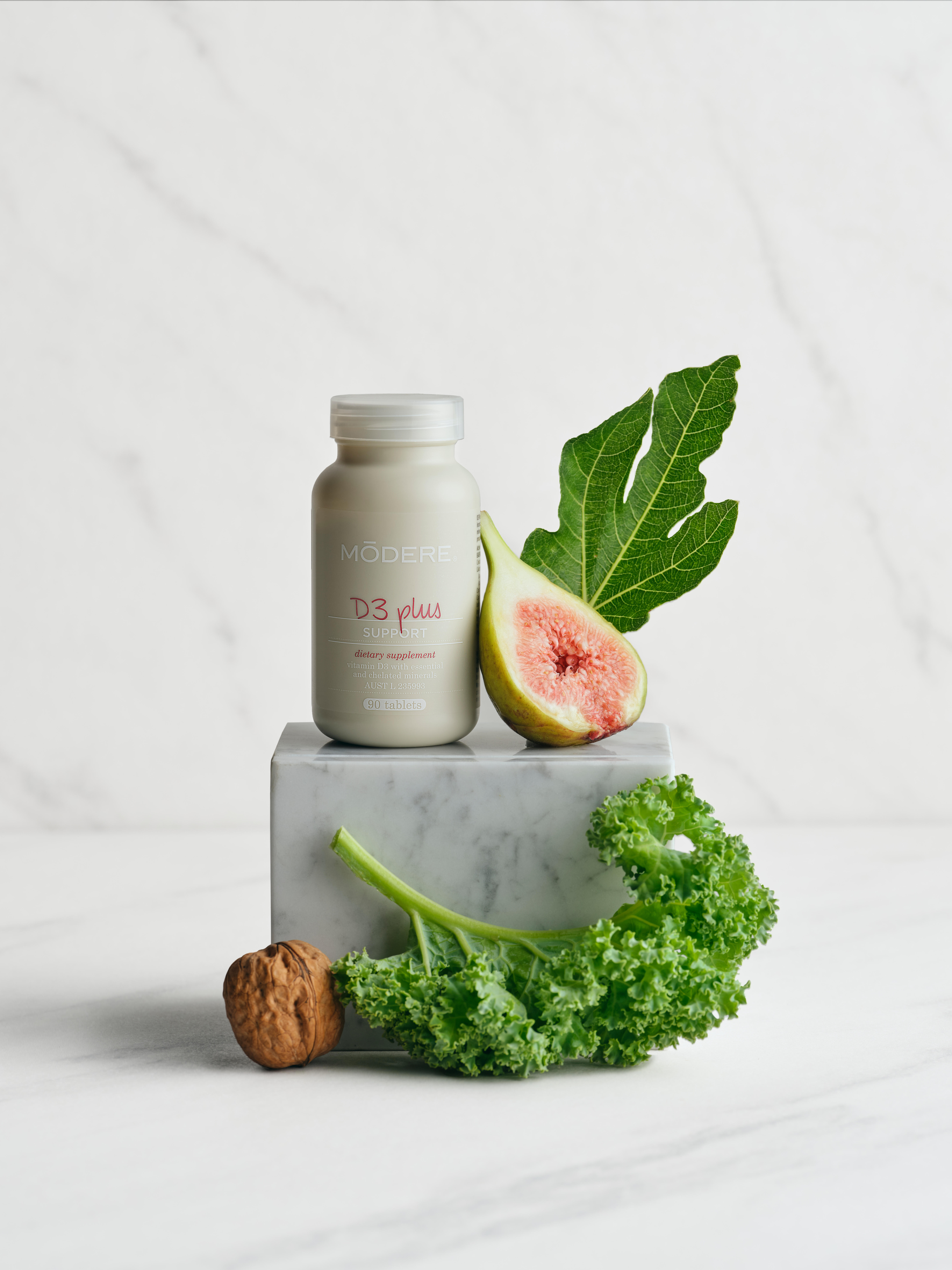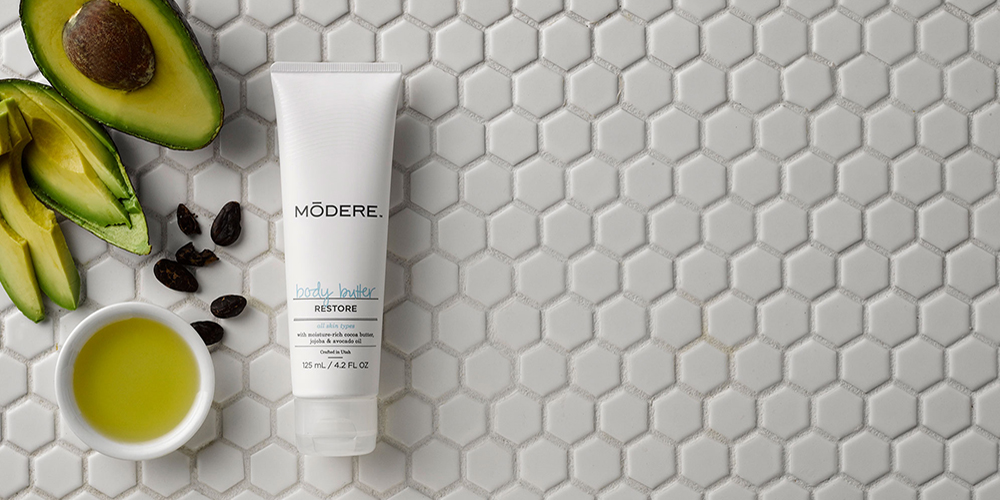Do you try to eat right? Are you fairly active outdoors? Although these are great habits, chances are you’re still not getting enough vitamin D. But it’s not your fault! It’s incredibly hard to meet your minimum daily recommended amount of this crucial nutrient in a typical modern lifestyle.
IS SUN EXPOSURE ENOUGH TO GET YOUR VITAMIN D?

Vitamin D is nicknamed the sunshine vitamin because your body can only produce it when your skin is exposed to sunlight. But to get enough sunshine for effective vitamin D production, you need to spend at least 20 minutes outside with 40% of your body exposed between the hours of 10 AM and 4 PM. Even with our scorching sun, in Australia over 30% of adults have a mild, moderate or severe deficiency of vitamin D.1
Even if you are walking outside daily, you’re probably taking appropriate precautions like wearing a hat and sunscreen. SPF 15 blocks about 99% of the necessary UV rays, and research shows that even SPF 8 dramatically reduces vitamin D production.2 Does that mean you should go without sunscreen? Definitely not. The ultraviolet radiation (UV) from the sun is the best source of vitamin D and the main cause of skin cancer.3 In Australia, it’s crucial to balance the risk of skin cancer from excessive sun exposure with maintaining adequate vitamin D levels.3 Sensible sun protection measures can be taken without putting people at risk of vitamin D deficiency.3
SHOULDN’T A HEALTHY DIET SUPPLY ENOUGH VITAMIN D?

Consuming plenty of healthy fruits and vegetables is excellent advice, but plant-based sources provide very little vitamin D. Even if you ate portabella mushrooms, the best vegetable source, you’d need to eat about 50 cups every day to get enough.4
There are other foods with vitamin D, like fish and eggs, but for most people they aren’t sufficient. Research shows that on average, men consume only 34% of the daily recommended amount, while women get even less at just 28%.2
Lack of vitamin D in the diet isn’t a new problem. In the early 1900s deficiency was so commonplace there was a rickets epidemic, which is why most dairy products and breakfast cereals are fortified with vitamin D. This may be adequate to prevent significant illness, it still falls far short of the recommended daily amount.
TELLTALE CLUES THAT YOU MIGHT BE DEFICIENT
How often are you dealing with tiredness and fatigue or general aches and pains? Surprise—these common complaints could be your body’s way of saying it needs more vitamin D! And even if you might not be experiencing any health challenges, there’s a good chance you’re still falling short of the optimal amount of vitamin D.
In fact, vitamin D deficiency is becoming widespread, even among groups not previously considered at-risk.5 It’s estimated that nearly half of adults aren’t getting enough through sun exposure and diet, and it only gets harder with age.2
Seven risk factors for low vitamin D:2,7
- People whose lifestyle limits their sun exposure
- People who live in regions that receive less sunlight year-round (latitudes above 37 degrees north or below 37 degrees south)
- Older populations who require more vitamin D
- People with darker skin because they don’t synthesise vitamin D from the sun as easily
- Those who take medications that affect vitamin D absorption
- Anyone who’s obese or had gastric bypass surgery
- People with digestive conditions, such as coeliac disease, that affect vitamin D absorption.
WHAT EXACTLY DOES VITAMIN D DO FOR YOUR BODY ANYWAY?
The bottom line? Vitamin D is critical to your health and numerous vital functions in the body. One of the most crucial is that it’s proven to promote the absorption of calcium and phosphorous, which are required to the development and maintenance of strong bones and teeth.2 For this reason, ensuring optimal intake throughout your life is essential.
Just as important, vitamin D has been shown to support immune function.2,9 We often focus on our immune system during the winter months, but our bodies are fighting potential illnesses all the time. That’s why you should make it a priority to maintain a healthy, consistent level of vitamin D year-round.
HOW MUCH VITAMIN D IS OPTIMAL?
The recommended daily intake in Australia and New Zealand ranges from 5 mcg (200 IU) to 15 mcg (600 IU). Although some groups recommend more, this is the baseline amount that the Australian National Health and Medical Research Council feels is necessary to experience most of the benefits associated with vitamin D.
Life Stage Recommended Daily Amount10
- Adults 18–50 years 5 mcg (200 IU)
- Adults 51-70 years 10 mcg (400 IU)
- Adults 71 years and older 15 mcg (600 IU)
- Pregnant and breastfeeding 5 mcg (200 IU)
BENEFITS OF TAKING A VITAMIN D SUPPLEMENT
Did you know that there are actually different types of vitamin D? And in fact, not all D supplements will provide the benefits you’re looking for. Here’s what you need to know before you shop for a vitamin D supplement. There’s vitamin D2, otherwise known as ergocalciferol, derived from mushrooms. And then there’s vitamin D3, also known as cholecalciferol, found in animal sources like salmon, eggs and fortified milk. One of these is significantly more bioavailable than the other, and it’s the form your body naturally produces when exposed to the sun—vitamin D3, shown to increase vitamin D levels in the blood more quickly than vitamin D2.
Modere D3 delivers high potency colecalciferol with chelated minerals, to support calcium absorption and promote strong bones.

To order now and to learn more about our scientifically developed and award-winning products, visit modere.com.au/modere.co.nz
| * Always read the label and follow the directions for use. If symptoms persist, talk to your health professional. |
References
2 https://ods.od.nih.gov/factsheets/VitaminD-HealthProfessional/#en1/
3 https://www.cancer.org.au/cancer-information/causes-and-prevention/sun-safety/vitamin-d
4 https://nutrivore.com/foods/portabella-mushroom-nutrients/
5 https://www.ncbi.nlm.nih.gov/pmc/articles/PMC6075634/
6 https://www.ncbi.nlm.nih.gov/pmc/articles/PMC2901845/
7 https://ods.od.nih.gov/factsheets/VitaminD-Consumer/
8 https://pubmed.ncbi.nlm.nih.gov/18541825/
9 https://www.ncbi.nlm.nih.gov/pmc/articles/PMC3166406/
10 https://www.eatforhealth.gov.au/nutrient-reference-values/nutrients/vitamin-d










